September 2019
September 16, 2019
Douglas Bader, the Legless Ace

The Wikipedia page.
Bader joined the RAF in 1928, and was commissioned in 1930. In December 1931, while attempting some aerobatics, he crashed and lost both his legs. Having been on the brink of death, he recovered, retook flight training, passed his check flights and then requested reactivation as a pilot. Although there were no regulations applicable to his situation, he was retired against his will on medical grounds.[3]
After the outbreak of the Second World War in 1939, however, Douglas Bader returned to the RAF and was accepted as a pilot. He scored his first victories over Dunkirk during the Battle of France in 1940. He then took part in the Battle of Britain and became a friend and supporter of Air Vice Marshal Trafford Leigh-Mallory and his "Big Wing" experiments.
In August 1941, Bader baled out over German-occupied France and was captured. Soon afterward, he met and was befriended by Adolf Galland, a prominent German fighter ace.[4] Despite his disability, Bader made a number of escape attempts and was eventually sent to the prisoner of war camp at Colditz Castle. He remained there until April 1945 when the camp was liberated by the First United States Army.
He even featured in a comic. (Use link for readable copy of image below.)
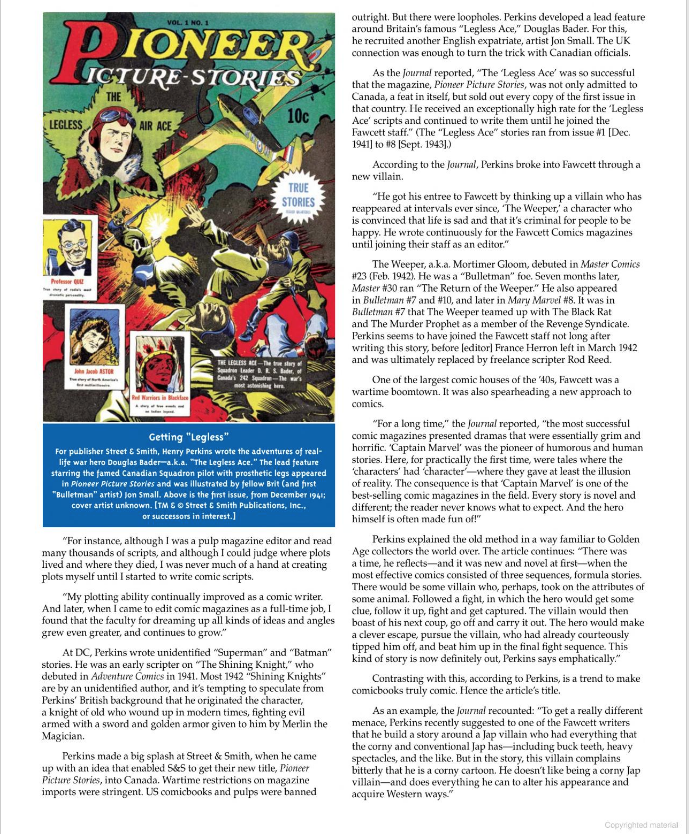
Posted By: Paul - Mon Sep 16, 2019 -
Comments (1)
Category: Accidents, War, Air Travel and Airlines, 1940s, Differently Abled, Handicapped, Challenged, and Otherwise Atypical
September 15, 2019
The History of Nuking Hurricanes
The idea of nuking hurricanes has been in the news lately. Which made me wonder: how soon after learning of the existence of atomic bombs did people start to speculate about dropping them into hurricanes?The answer seems to be, immediately. I found the article below about nuking hurricanes, dated Aug 8, 1945 — a mere two days after the bombing of Hiroshima.
Interestingly, the article speculates that the idea may have been inspired by earlier legends about using cannons to dispel waterspouts:

The Miami News - Aug 8, 1945
Posted By: Alex - Sun Sep 15, 2019 -
Comments (4)
Category: Atomic Power and Other Nuclear Matters, 1940s, Weather
Remco Monkey Gun
Nerf missiles? For wimps!
Posted By: Paul - Sun Sep 15, 2019 -
Comments (2)
Category: Destruction, Toys, 1960s, Weapons
September 14, 2019
Death by helicopter
Parachuting onto the whirling blades of a helicopter is both an unusual and a horrific way to die. It's definitely the worst kind of parachute accident I can imagine. It happened to one young woman — her first time parachuting — back in August 1987.
The Guardian - Aug 10, 1987

Paula Goodayle “who was hacked to death when she fell through the whirling blades of a helicopter during her first jump.”
The Sport Parachutist magazine (Oct 1987) offered some details into the subsequent investigation of the incident. The basic conclusion seems to have been that it was a colossal screw-up to have had students continue to parachute when a helicopter was in the area.
The conclusions of the Board of Inquiry were that Drop Zone Control or Air Traffic Control failed to suspend parachuting when the helicopter was in the area and that the helicopter pilot failed to take avoiding action or clear the area when parachiting was in progress. The Board could see no reason why parachuting was not suspended or why the helicopter was in the area whilst parachuting was taking place.
The recommendations of the Board were that whenever a student parachute programme is in operation, the Drop Zone Controller must have radio communication with parachuting aircraft for the purpose of suspending parachuting.
Posted By: Alex - Sat Sep 14, 2019 -
Comments (0)
Category: Death, Flight, 1980s
Mystery Illustration 85
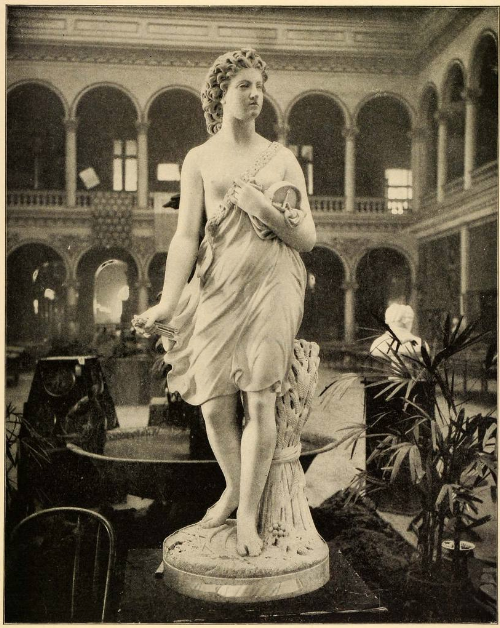
This female figure was intended to represent something very tangible: ie, not "virtue," "justice," etc.
What was the thing she represented?
The answer is here.
Or after the jump.
More in extended >>
Posted By: Paul - Sat Sep 14, 2019 -
Comments (8)
Category: Statues and Monuments, Nineteenth Century
September 13, 2019
Velvet-Lined Bathtub
Back in 1936, interior decorators predicted a popular future for velvet-lined bathtubs.I can only imagine they would have been a nightmare to clean.

Pottsville Republican and Herald - Dec 4, 1936

Emery County Progress - Nov 27, 1936
Update: Thanks to our knowledgeable readers, Floormaster Squeeze and KDP, for pointing out that Steve Martin had a line in one of his routines about buying a fur-lined sink. I found the clip on YouTube (audio only, unfortunately). The fur-lined sink reference occurs less than a minute in.
Posted By: Alex - Fri Sep 13, 2019 -
Comments (7)
Category: Bathrooms, Baths, Showers and Other Cleansing Methods, 1930s
Glen Falls Sequence
Creator's Wikipedia page here.
Posted By: Paul - Fri Sep 13, 2019 -
Comments (3)
Category: Art, Surrealism, Stop-motion Animation, 1930s
September 12, 2019
Nun in a miniskirt
November 1969: The fact that Sister Joann Malone of the Order of Loreto was protesting wasn't particularly big news, but the fact that she was wearing a miniskirt as she did so was front-page news.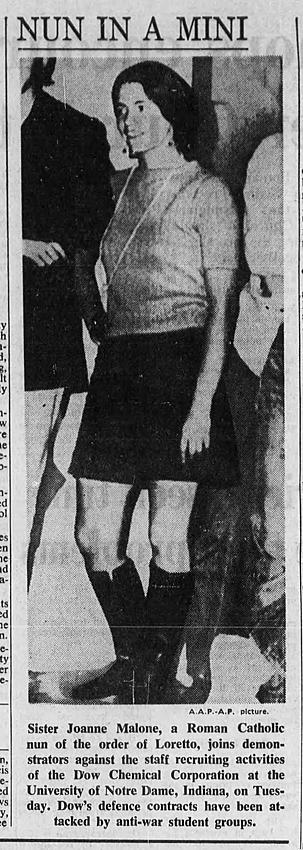
Sydney Morning Herald - Nov 21, 1969

Decatur Herald - Nov 20, 1969
Her superior, Sister Rose Maureen Sanders, head of the St. Louis province of the Sisters of Loreto, wasn’t too happy about the fashion decision. From a follow-up article:
“I regretted the photo when I saw it in newspapers here and thought her wearing a miniskirt was ridiculous,” said the provincial superior.
“It’s an aberration on her part. Many, many sisters are wearing modern clothes but would not choose a miniskirt. Why do the newspapers print things like that?”
Posted By: Alex - Thu Sep 12, 2019 -
Comments (5)
Category: Fashion, Religion, Nuns, 1960s
Asbestos-Clad, Fireworks-Laden Boxers
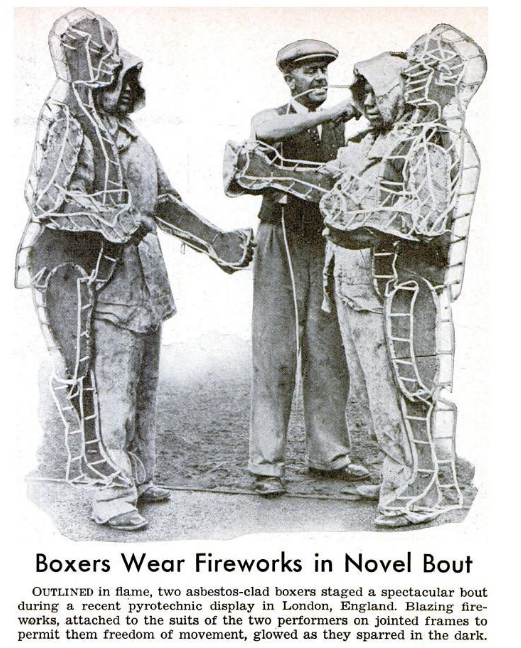
Original is here.
Posted By: Paul - Thu Sep 12, 2019 -
Comments (2)
Category: Daredevils, Stuntpeople and Thrillseekers, Death, Excess, Overkill, Hyperbole and Too Much Is Not Enough, Explosives, Foreign Customs, 1930s
September 11, 2019
Hallucinogenic giraffe livers
It's possible that the livers of some giraffes might be hallucinogenic when consumed. Although the claim is controversial.
The idea was first introduced into the scientific literature in 1958 by anthropologist Ian Cunnison, in an article published in the obscure journal Sudan Notes and Records.
Cunnison had spent time with the giraffe-hunting Humr tribe of Sudan, and he reported that after a successful hunt they would often consume a drink called umm nyolokh made from the liver and bone marrow of the giraffe. Cunnison didn't try the drink himself, but its effects, as described to him by the Humr, seemed to be hallucinogenic, Here's the relevant passage in Cunnison's article:
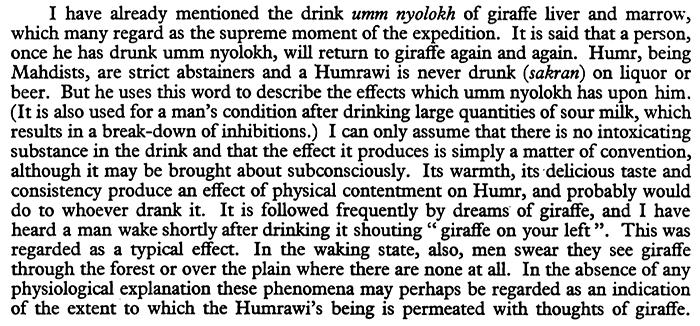
It's noted on Wikipedia that, if the reports from the Humr were accurate, “this claim would make the giraffe the first mammal to be discovered to contain a hallucinogen in its bodily tissues,” However, Cunnison himself was skeptical, suggesting that the perceived effects might be “brought about subconsciously.”
Cunnison’s article didn’t attract much attention until 1998, when Richard Rudgely discussed it in his Encyclopedia of Psychoactive Substances. Rudgely was far more willing to believe that the giraffe livers really were hallucinogenic.
Since then people have speculated that the giraffes in Sudan might have been consuming plants, such as Acacia trees, that contained psychoactive substances, which then concentrated in their livers.
But to date, to my knowledge, the issue remains entirely speculative because no one has gone to Sudan to find and test some of this umm nyolokh.

Members of the Humr tribe skinning a giraffe after a hunt.
Source: Sudan Notes and Records
Posted By: Alex - Wed Sep 11, 2019 -
Comments (4)
Category: Animals, Drugs, Psychedelic, Inebriation and Intoxicants
| Get WU Posts by Email | |
|---|---|

| Who We Are |
|---|
| Alex Boese Alex is the creator and curator of the Museum of Hoaxes. He's also the author of various weird, non-fiction books such as Elephants on Acid. Paul Di Filippo Paul has been paid to put weird ideas into fictional form for over thirty years, in his career as a noted science fiction writer. He has recently begun blogging on many curious topics with three fellow writers at The Inferior 4+1. Chuck Shepherd Chuck is the purveyor of News of the Weird, the syndicated column which for decades has set the gold-standard for reporting on oddities and the bizarre. Our banner was drawn by the legendary underground cartoonist Rick Altergott. Contact Us |

